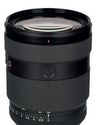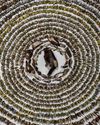
Skylum developed Luminar Neo from the ground up to be different from previous Luminar editors like Luminar 4 and Luminar AI. It has all the Luminar AI tools and a very similar layout, but there are additional features and more ‘state-of-the-art technologies’. Unlike previous editions of Luminar, Luminar Neo has a modular engine and this enables faster image processing.
Luminar Neo is available to purchase with a one-time payment of £129 (discounted from £169) or as a subscription. The one-time purchase includes Luminar Neo and all the maintenance and feature updates delivered for this software version. It can also be expanded by purchasing the 2022
Extensions Pack mentioned in the ‘Extensions’ box on page 46, for £249. Alternatively, a Pro subscription which costs £79 for the first year and £89 per year thereafter, brings the Luminar Neo software and all future updates and versions, plus all the extensions released during the subscription period and the Perfect Fluffy Clouds Pack.
Getting started
As usual when you launch an image-editing software package, the first step in using Luminar Neo is to open an image. Luminar Neo has a catalog section but it works with your computer’s filing structure and you don’t have to actually import images into it. Instead, you just need to let it know which folders you are interested in working with. It’s also possible to work on individual images by using the ‘Add Image’ button in the top left corner of the window to locate your desired file.
Diese Geschichte stammt aus der December 13, 2022-Ausgabe von Amateur Photographer.
Starten Sie Ihre 7-tägige kostenlose Testversion von Magzter GOLD, um auf Tausende kuratierte Premium-Storys sowie über 8.000 Zeitschriften und Zeitungen zuzugreifen.
Bereits Abonnent ? Anmelden
Diese Geschichte stammt aus der December 13, 2022-Ausgabe von Amateur Photographer.
Starten Sie Ihre 7-tägige kostenlose Testversion von Magzter GOLD, um auf Tausende kuratierte Premium-Storys sowie über 8.000 Zeitschriften und Zeitungen zuzugreifen.
Bereits Abonnent? Anmelden

Calling The Shots: A Queer History of Photography
Offering an unprecedented view of photographic history through a queer lens, this is a wonderful and powerful book, says

Large-aperture standard zoom, too
SONY has also revealed a new premium standard zoom, the FE 28-70mm F2 GM.

Super-fast, high-res Sony Alpha Ai II
SONY has announced its new professional full-frame flagship camera, the Alpha A1 II.

39 awesome accessories
Our round-up of the best accessories we've used and reviewed this year, along with some old favourites. There's something here for every budget, starting from just £7, including tripods, bags, filters and much more

Such a thing as society
This autumn sees the launch of a major new book and exhibition devoted to examining the multiplicities of photography during 1980s Britain. Peter Dench finds out more

Join Club
The sociable Canvey Island Photographic Club is keen to grow its in-person meet ups

Capturing flight
Winners and finalists of Bird Photographer of the Year share their tips for success with Hollie Latham Hucker

140 years of change
AP has become the world’s oldest surviving consumer photo magazine because we have moved with the times, says Nigel Atherton

Preserving history in platinum
A deep dive into the meticulous art of platinum printing, and the collaboration between the Royal Geographical Society and Salto Ulbeek. Mike Crawford explores how they brought historical photographs to life with enduring beauty and precision

Life in the past lane
What was life like for an amateur photographer in 1884? John Wade takes a trip back in time